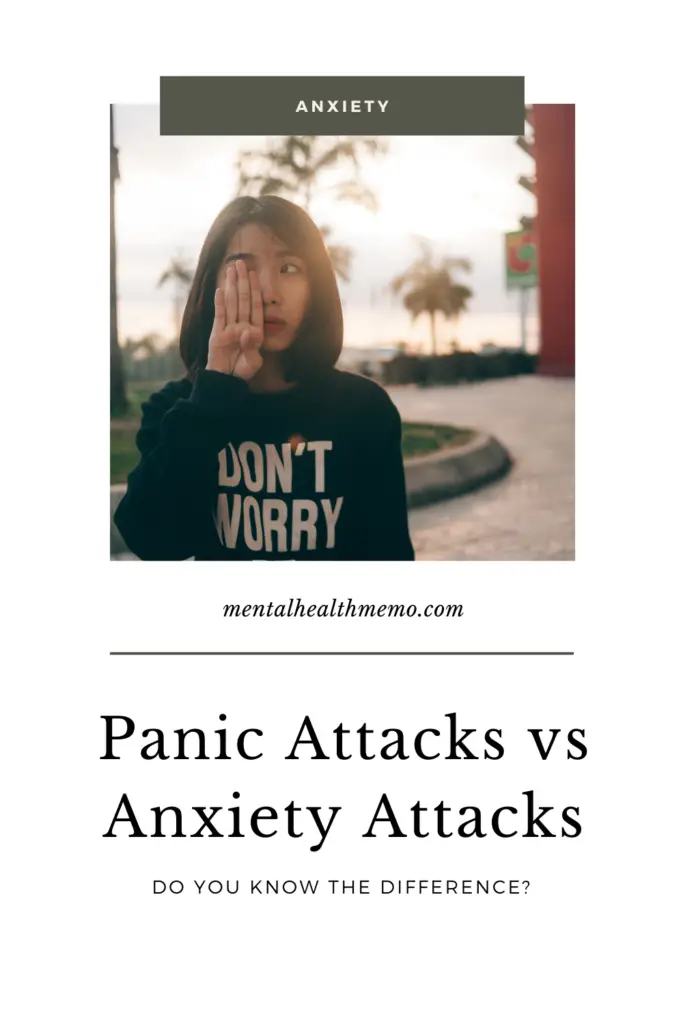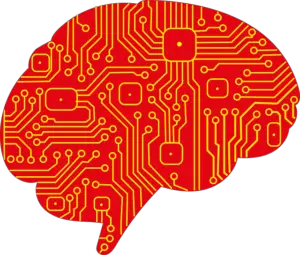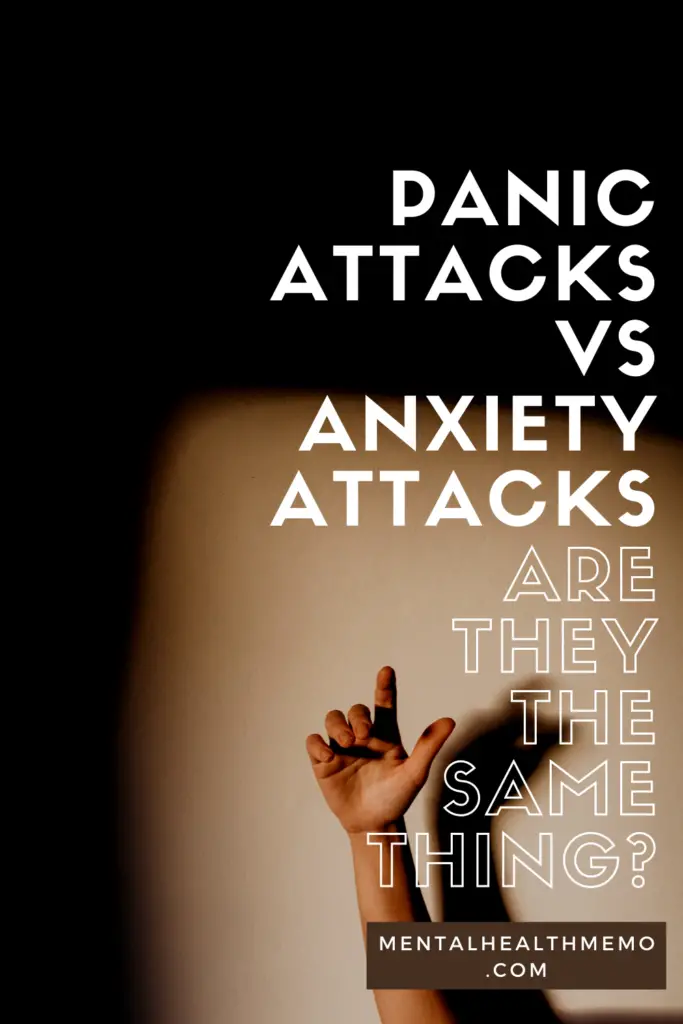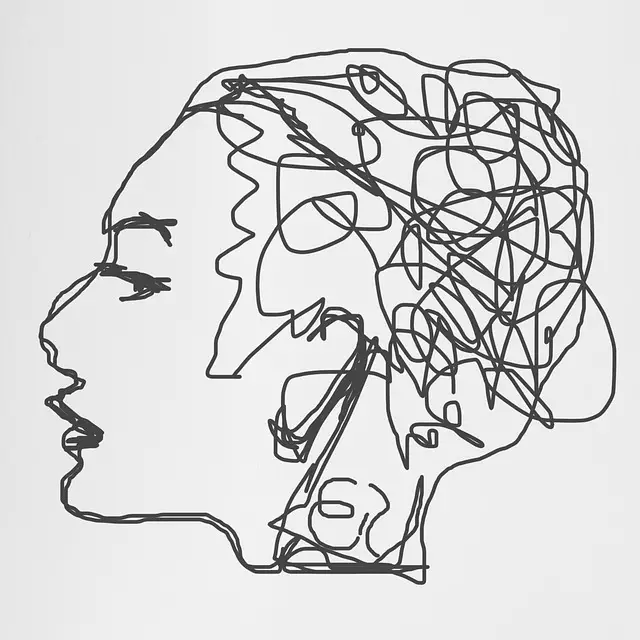Table of Contents
Panic Attacks Vs Anxiety Attacks: The Issue
I often hear the words “anxiety attack” and “panic attack” used interchangeably. This is often done in casual conversation and even in the professional field. And because of that I also used to think they were the same thing.
But as I studied Psychology and Social Work, and continued my journey with Panic Disorder, I learned that despite a lot of similarities they’re actually NOT THE SAME THING *cue in dramatic dun dun dunnnnn*!
Without giving the whole post away, panic attacks and anxiety attacks are simply different responses.
Why We Should Know the Difference
You might be thinking okay, so what if they’re different? Aren’t they pretty much the same thing so I can address them in the same way? Well, my dear friend, the answer is actually no.
There are key differences between the two phenomena and ways in which we can support one over the other. Of course there is overlap, but because they don’t stem from the same response the diagnoses and treatment plans you might get for them will differ.
In other words, knowing the difference can help us better identify what we or someone else may be experiencing, and therefore help us to better support them or ourselves.
For example, let’s take twisting your ankle vs breaking it. It might feel similar in the sense that it’s in the same area, the pain is intense, and you’re unable to use that ankle once you’ve hurt it.
However, the treatment and rehabilitation you get for a twisted ankle vs a broken ankle are going to be different! And if you give the wrong treatment for the injury, it could delay the healing process or cause more damage. Of course, there will likely be overlap in the treatment plans, but they won’t be identical.
So look at panic attacks and anxiety attacks in that way too!
Panic Attacks Vs Anxiety Attacks: The Differences


1. Stress Response Vs Fear Response
This is the biggest difference between the two.
Anxiety and anxiety attacks stem from a stress response or worrying.
Think of a stress response as something like a very heavy workload that is making you constantly worried, lose sleep, and ruin your appetite. But it isn’t a life or death threat.
Alternatively, panic attacks come from a fear response.
A fear response is being scared because you might die in the situation, and it truly is a matter of life or death.
For example, you know those thriller movies where the murderer comes into the house and the person is curled up somewhere trying to hide? You can see their eyes are dilated, they’re sweating, breathing hard, their adrenaline is up and they’re hyper-sensitive? That is the fear response.
But be mindful that this fear response is a good thing. In a survival context, this fear response is essential to keeping us alive.
In fact, it’s so important it’s one of the first things our brains learn to do. This fear response also goes by “fight, flight, or freeze” which is the function of the Amygdala, found in the reptilian part of our brain. The reptilian part of our brain harbors all our “basic needs” responses that relate to food, safety, and sex.
You can find it at the bottom of the brain, where the stem is. This is the part of our brain that starts functioning almost immediately once we’re born, and helps tell our caregivers what we need and if we feel unsafe so that we can survive.
The problem is that this fear response should not get triggered randomly or for situations that should not elicit this type of reaction. This is where the “disordered” part comes in.
For example, getting a panic attack because you have to go outside and buy groceries is not appropriate. There isn’t really a life or death issue there (unless you’re shopping during Black Friday in the U.S).
So your Amygdala is getting set off prematurely and giving you a false fear response, aka “Fight, Flight or Freeze”, aka a panic attack.
In summary, anxiety attacks stem from a stress response related to the feelings of worry. Panic attacks are a fear response that is embedded in our genetics and finds its home in the Amygdala, which gets set off when we are in danger or during a false alarm (disordered panic attacks).
2. Physical symptoms and their severity
The physical symptoms of both an anxiety attack and a panic attack are very similar, which explains why they’re often confused for one another.
The biggest difference in terms of physical symptoms is that they’re much more severe and intense for a panic attack.
That’s not to say anxiety attacks can’t be absolutely terrifying or terrible to go through.
But because panic attacks stem from a fear response (one of our strongest types of innate responses), the experience is much more intense.
So while both may have symptoms like:
- Sweating
- Headaches
- Racing heart
- Shakiness
- Difficulty breathing
- Hypervigilance
- Numbness
- Hot and cold flashes
These are going to be experienced much more intensely with a panic attack.
On top of that, panic attacks unlike anxiety attacks have more of an “out of body” effect. This is known as “dissociation”.
The reason this is more prominent in panic attacks is because of the “Freeze” part of the “Fight, Flight, or Freeze” fear response. Sometimes our bodies decide that the safest way for us to survive something is to simply freeze and mentally check out of the event.
We see this a lot in assault cases where the person can’t fully recall what happened because they dissociated during the act of violence (also because the Hippocampus which is in charge of our memory gets shut off when the Amygdala gets turned on).
However, it does also happen a lot in panic attacks in situations that are not actually dangerous. Again, this is where panic attacks become disordered.
It’s not necessarily always a symptom for everyone, but it is something that isn’t experienced as much with an anxiety attack.

3. Mindset
As I already mentioned, the type of response these conditions stem from is different, their symptoms are also slightly different and panic attacks are much more intense.
Because of all this, the mindset one may be in during an anxiety attack versus a panic attack will also vary.
A person experiencing an anxiety attack may have thoughts such as:
- I’m really worried
- This makes me uncomfortable
- I’m incredibly stressed right now
Alternatively, the mindset of a person experiencing a panic attack would be more like:
- I’m going to die
- Something bad is about to happen to me
- I’m having a heart attack
- I’m scared and I don’t know why
As you can see by these examples, the mindset of someone experiencing an anxiety attack is much more centered on worry and stress.
A panic attack mindset in comparison is more of an intense feeling of impending doom and unexplainable (or explainable) fear with severe physical symptoms.
Because of this variance of thoughts, these conditions may need to be dealt with differently at the moment.
If you’re curious I have already written articles on how to help someone experiencing a panic attack, as well as what not to do.
Most of these can also be applied to an anxiety attack as well with variants in success rate. As a rule of thumb, I always recommend simply asking what the person needs instead of forcing anything onto them.

4. Duration
Anxiety attacks are very flexible in how long they last. Sometimes the person needs just a few minutes, sometimes they need a few hours.
This is likely because anxiety attacks can vary a lot in intensity and symptoms. So that means that every person will experience an anxiety attack differently.
While everyone also experiences panic attacks differently, a panic attack at its full intensity can only last about 20 minutes. Period.
You can still have anxiety before and after the panic attack, but a full-blown one can only be around the 20-minute mark.
The reason for that is the fear response is so intense and draining on the body and mind, it can only last a small amount of time. If it lasted longer, it would likely do damage.
Also, in terms of a survival point of view, ideally, you should have escaped the threatening situation that caused the fear response in 20 minutes. If you haven’t you’re likely dead by then (yikes).
5. Triggers
There is a difference in the department of triggers with these two conditions as well.
In terms of an anxiety attack, there ALWAYS has to be a trigger. Without a stressor, there can’t be an anxiety attack. Also, enough anxiety needs to build up first for an anxiety attack, so often the triggers/stressors have been going on for a while.
Alternatively, a panic attack MAY NOT ALWAYS have a trigger. If the person was in danger and it triggered the Amygdala, that would be a trigger. Even if they weren’t in danger but there was something that brought up feelings of panic, it would still be a trigger.
However, panic attacks can actually have no known trigger and simply pop out of nowhere. This is the key component of Panic Disorder, which I have been diagnosed with.
This was always hard for me to accept because I would always try to understand why things were happening.
And so when I would be getting panic attacks in the middle of just laughing with my friends, I’d get incredibly frustrated.
I would even have Nighttime (Nocturnal) Panic Attacks which is essentially waking up into a panic attack from your sleep. As you can imagine, as I’m sleeping there isn’t anything there really to trigger me. But I would still have a panic attack.
These examples are just to show that panic attacks don’t always have a trigger. But anxiety attacks always do.

In Summary
I hope this article has helped clear up the biggest differences between panic attacks vs anxiety attacks for you.
I’ve based all this knowledge on what I have learned in school (Social Work & Psychology), therapy, and generally, my experience living with Panic Disorder.
I want to add that our understanding of mental disorders is constantly changing, so this information could become inaccurate in a few years.
So I hope you continue trying to learn more, as am I, about mental illnesses as more and more research comes out.
All my love,
T

